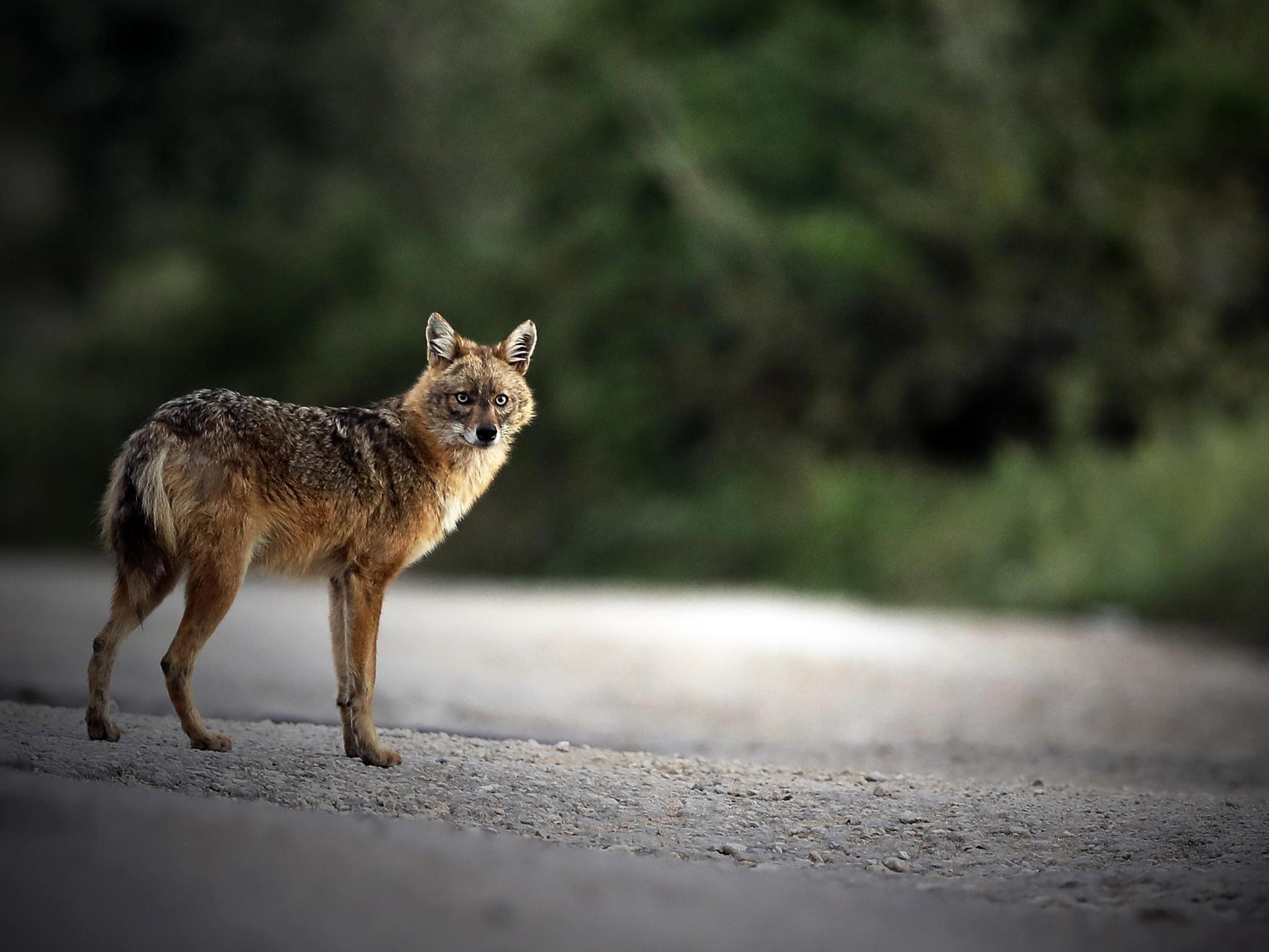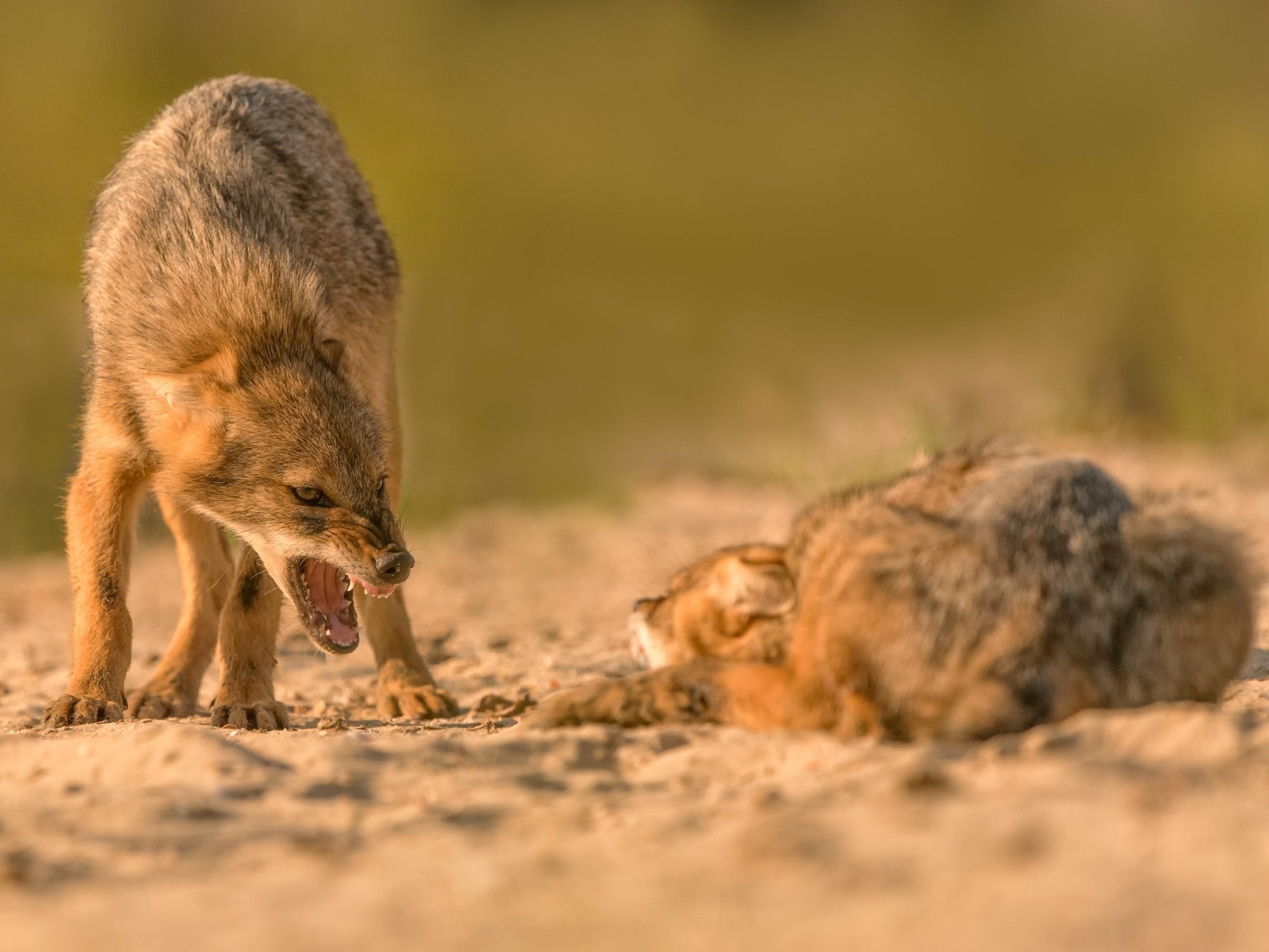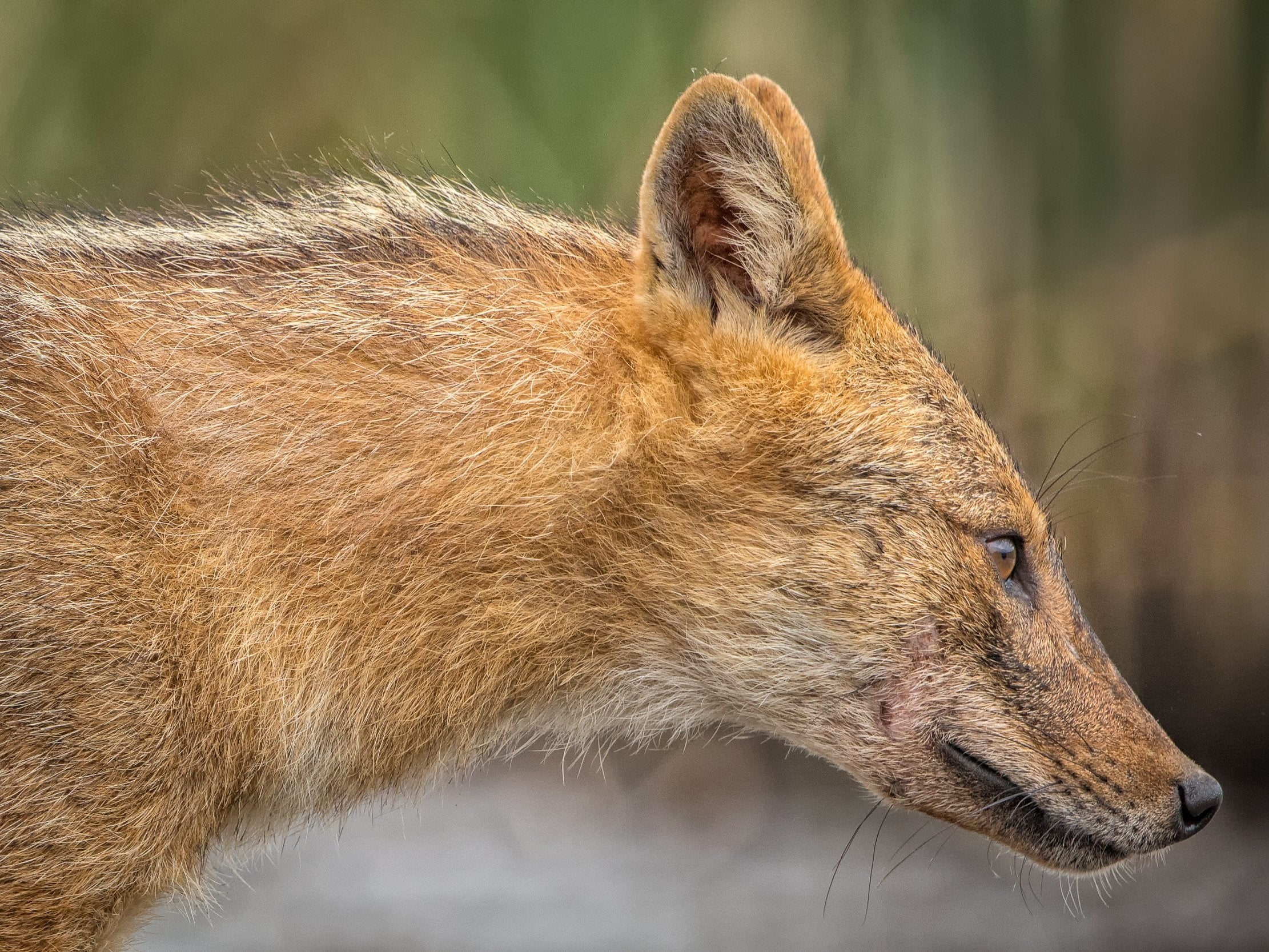Canid Migration Opportunists
"Who would have guessed that this small canid would be the likely winner of poisoning campaigns of wolves in the Balkans?"
"[For golden jackals in Europe], the moment of truth is soon to come."
Nathan Ranc, doctoral student, Harvard University/Edmund Mach Foundation, Italy
 |
| Getty There are now over 100,000 golden jackals in Europe, as the population has boomed since the 1950s |
Jackals, originating in the Middle East and southern Asia historically, have moved into Central and Eastern Europe, displacing the wolf population native to the area. Vastly outnumbering wolves in Europe, golden Jackals are assumed to total about 117,000 according to the latest estimate. A high estimate of wolves in Europe now stands at about 17,000.
Slovenia, for example, has between 200 and 400 jackals, according to Miha Krofel, a conservation biologist at the University of Ljubljana in Slovenia, there are 75 wolves.
Jackals weigh an average of nine kilograms, they are considered to be a medium-sized predator. At one time jackals existed only on the fringes of Europe. About eight thousand years ago the species began to arrive at the southern edge of Central and Eastern Europe, as evidenced by the fossil record.
They began to slowly expand into Europe in the 19th Century, but by the 1950s that expansion accelerated, particularly so over the last several decades.
Jackals mate for life, and a pair forms the core of a pack. Just as wolves and coyotes have family-based packs, so too do jackals, though their groups have a tendency to be more compact, four to six, as contrasted with wolf packs that may include 15 animals. Young jackals may remain with their parents, or they may choose to establish their own packs.
In some European countries such as Greece, Slovenia, Croatia, Hungary, Romania, Ukraine, Austria, Italy and Bulgaria -- with the largest population -- there are now substantial populations of jackals. Biologists believe jackals began their migration north to fill the vacuum when wolves were being eradicated, particularly in the Balkans. Jackals appear to avoid geographic areas populated by wolves.
 |
| Smaller than North American coyotes, golden jackals weigh an average 20 pounds Getty |
Where snow appears on the ground over hundred days annually, jackals seem to avoid moving in, so it is anticipated that as climate change continues and snow cover declines, a greater number of European territories will become more attractive to the presence of jackals.
In southwest Slovenia the past three years saw a decline in wolf attacks on sheep farms. With the introduction of jackals, more sheep are now being lost, however, raising the hackles of farmers.
Once jackals establish a pack and reproduction moves steadily forward, offspring have the opportunity to establish new packs as migration into Western Europe commences. Nathan Ranc, the doctoral student working alongside Miha Krofel, conservation biologist out of Trieste, Italy, feels that more rigid procedures for waste management and livestock corpse disposal on farms will serve to deter jackal expansion in Western Europe.
Dr. Krofel's research team comprised of 37 scientists and naturalists, all volunteering to monitor the animals throughout Europe, hope to find some answers to questions respecting the existence of the jackals and their growing proliferation in a geography to which they have become migratory interlopers, making the most of opportunities available to them.
 |
| The jackal had a period of past glory: the Egyptian god Anubis was said to have a jackal’s head Getty |
Labels: Animal Research, Eastern Europe, Golden Jackals, Migration

0 Comments:
Post a Comment
<< Home